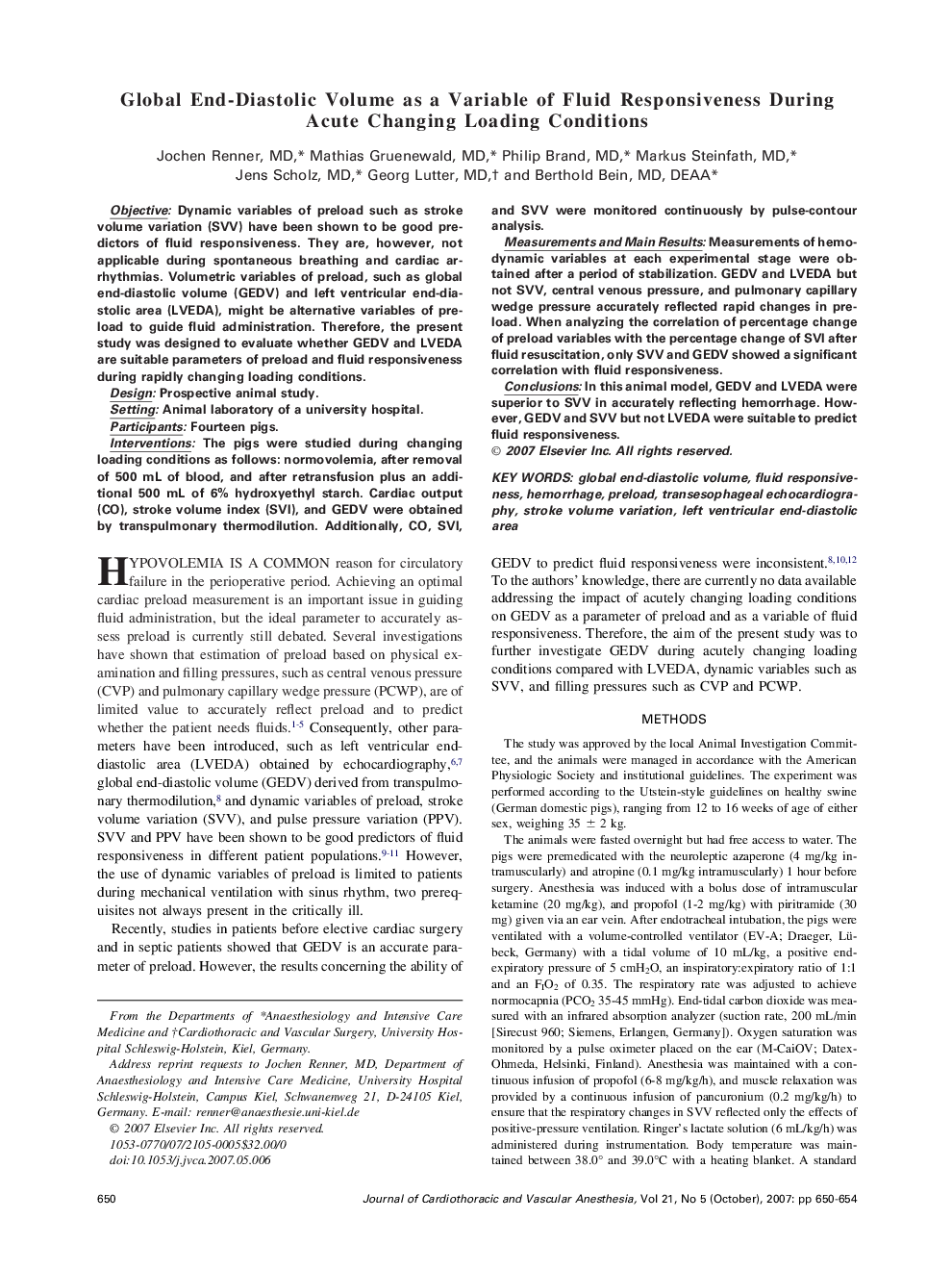| کد مقاله | کد نشریه | سال انتشار | مقاله انگلیسی | نسخه تمام متن |
|---|---|---|---|---|
| 2761016 | 1150186 | 2007 | 5 صفحه PDF | دانلود رایگان |

Objective: Dynamic variables of preload such as stroke volume variation (SVV) have been shown to be good predictors of fluid responsiveness. They are, however, not applicable during spontaneous breathing and cardiac arrhythmias. Volumetric variables of preload, such as global end-diastolic volume (GEDV) and left ventricular end-diastolic area (LVEDA), might be alternative variables of preload to guide fluid administration. Therefore, the present study was designed to evaluate whether GEDV and LVEDA are suitable parameters of preload and fluid responsiveness during rapidly changing loading conditions.Design: Prospective animal study.Setting: Animal laboratory of a university hospital.Participants: Fourteen pigs.Interventions: The pigs were studied during changing loading conditions as follows: normovolemia, after removal of 500 mL of blood, and after retransfusion plus an additional 500 mL of 6% hydroxyethyl starch. Cardiac output (CO), stroke volume index (SVI), and GEDV were obtained by transpulmonary thermodilution. Additionally, CO, SVI, and SVV were monitored continuously by pulse-contour analysis.Measurements and Main Results: Measurements of hemodynamic variables at each experimental stage were obtained after a period of stabilization. GEDV and LVEDA but not SVV, central venous pressure, and pulmonary capillary wedge pressure accurately reflected rapid changes in preload. When analyzing the correlation of percentage change of preload variables with the percentage change of SVI after fluid resuscitation, only SVV and GEDV showed a significant correlation with fluid responsiveness.Conclusions: In this animal model, GEDV and LVEDA were superior to SVV in accurately reflecting hemorrhage. However, GEDV and SVV but not LVEDA were suitable to predict fluid responsiveness.
Journal: Journal of Cardiothoracic and Vascular Anesthesia - Volume 21, Issue 5, October 2007, Pages 650–654